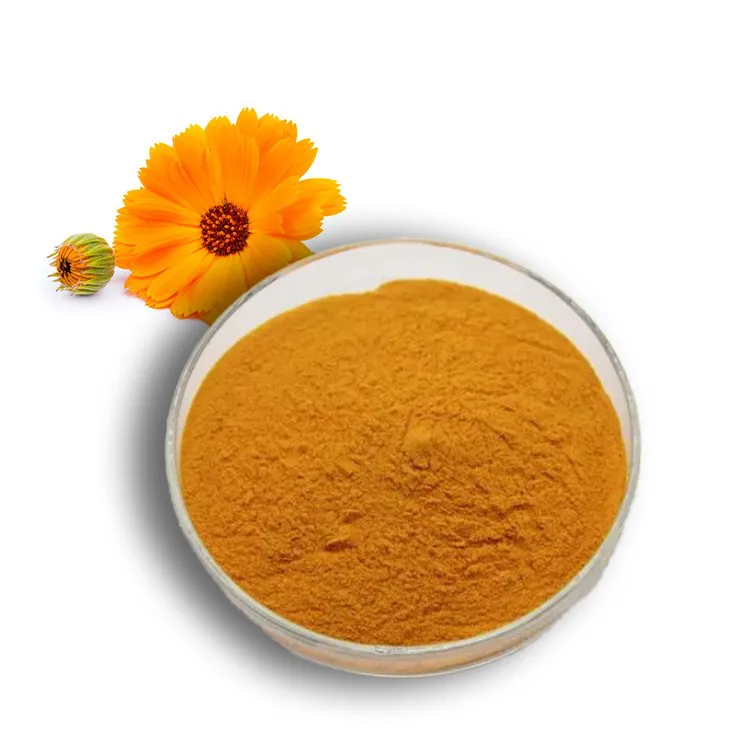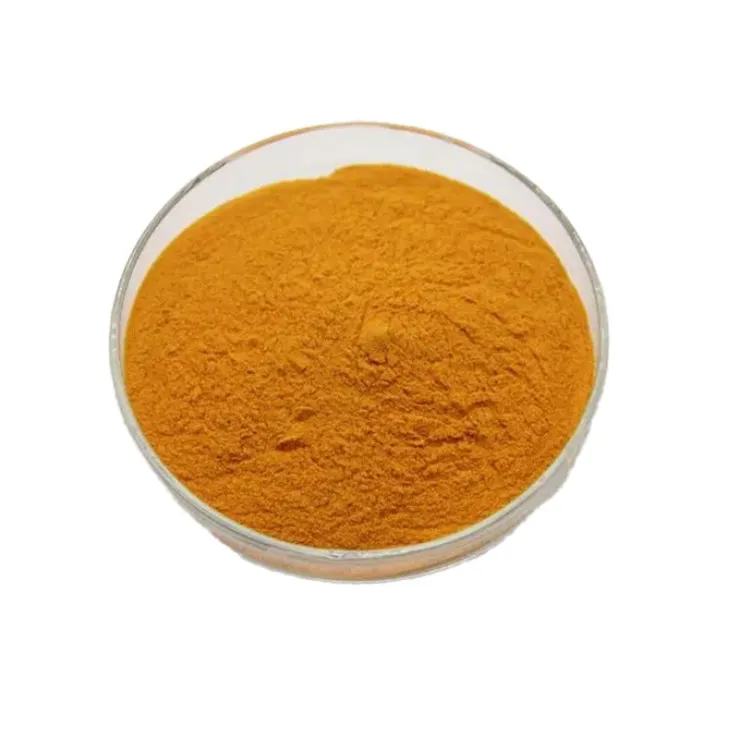- 0086-571-85302990
- sales@greenskybio.com
The best sources of natural calendula extract.
2024-11-29

Introduction
Calendula Extract has gained significant popularity in recent years due to its numerous medicinal and cosmetic properties. This extract is rich in flavonoids, carotenoids, and other bioactive compounds, which contribute to its anti - inflammatory, antioxidant, and wound - healing abilities. As the demand for high - quality Calendula Extract continues to rise, it is essential to understand the best natural sources. This article will explore the top origins of Calendula Extract, including those from Asia and the Americas, and discuss the factors that make these sources stand out.

Calendula in Asia: A Prominent Source
Cultivation Practices in Asia
Cultivation in India
India has a long history of cultivating calendula. The warm climate in many parts of the country provides favorable conditions for calendula growth. Indian farmers often use traditional agricultural practices that are well - suited to the local environment. They typically plant calendula during the appropriate seasons, taking into account factors such as rainfall and temperature. For example, in some regions of Rajasthan, calendula is planted during the cooler months to avoid extreme heat stress. Indian calendula is known for its high content of certain flavonoids, which may be attributed to the unique soil composition and agricultural techniques used in the country.
Cultivation in China
China is another major source of calendula in Asia. In China, calendula is often cultivated in large - scale agricultural operations. The Chinese growers pay great attention to soil fertility management. They use organic fertilizers and proper irrigation techniques to ensure healthy calendula growth. One significant advantage in China is the availability of diverse micro - climates. This allows for the cultivation of different varieties of calendula, which can lead to a wider range of chemical compositions in the extract. For instance, in the Yunnan province, the high altitude and relatively cool climate result in calendula with unique antioxidant properties.
Genetic Diversity in Asian Calendula
Asian calendula exhibits a remarkable genetic diversity. This diversity is the result of centuries of natural selection and human - mediated selection. Different regions in Asia have their own native or adapted varieties of calendula. These varieties can vary in terms of flower color, size, and chemical composition. For example, some calendula varieties in the Himalayan region may have evolved to withstand colder temperatures and have a higher concentration of certain bioactive compounds as a survival mechanism. The genetic diversity in Asian calendula is a valuable resource for obtaining high - quality extract with diverse medicinal and cosmetic properties.

Calendula in the Americas: Unique Native Species
Native Calendula Species in North America
North America is home to some native calendula species that have unique characteristics. One such species is found in the arid regions of the southwestern United States. This native calendula has adapted to the harsh desert environment, with deep - rooted systems to access water and a waxy coating on its leaves to reduce water loss. The extract from this species may contain specific compounds that are different from those in the more commonly cultivated varieties. Moreover, in parts of Mexico, there are native calendula species that have been used in traditional medicine for centuries. These species are often rich in compounds with anti - inflammatory properties, which are highly valued in modern medicine.
Calendula in South America
In South America, calendula also has a significant presence. In the Andean regions, the unique climate and altitude contribute to the growth of calendula with distinct chemical profiles. The high altitude in the Andes exposes calendula plants to increased ultraviolet radiation, which may lead to the production of higher levels of antioxidant compounds. Additionally, in the Amazon rainforest regions, although calendula is not as widespread as in other areas, some wild - growing calendula species may hold potential for new sources of extract. These species may have co - evolved with the diverse flora and fauna of the rainforest, resulting in unique chemical compositions.

Factors Affecting the Quality of Calendula Extract
Environmental Factors
Soil Composition
The soil in which calendula is grown plays a crucial role in determining the quality of the extract. For example, soils rich in organic matter tend to produce calendula with higher levels of bioactive compounds. In some areas of Europe, where the soil is rich in humus, calendula plants are known to have a more intense color and a higher content of flavonoids. pH Level is also an important factor. Calendula generally prefers slightly acidic to neutral soils. If the soil pH is too alkaline or too acidic, it can affect the plant's ability to absorb nutrients and produce certain compounds. For instance, in some regions with alkaline soils, calendula may have a lower concentration of carotenoids.
Climate Conditions
Temperature, rainfall, and sunlight exposure are all important climate factors. Calendula thrives in moderate temperatures. Extreme heat or cold can stress the plants and affect the composition of the extract. For example, in regions with very hot summers, calendula plants may produce more stress - related compounds, which could potentially change the overall quality of the extract. Adequate rainfall is necessary for healthy growth, but excessive water can lead to root rot and other problems. Sunlight exposure also affects the production of secondary metabolites in calendula. Plants grown in full sunlight may have different chemical compositions compared to those grown in partial shade.
Harvesting and Processing Methods
Harvesting Time
The time of harvesting calendula is critical. Harvesting too early or too late can significantly impact the quality of the extract. Generally, calendula should be harvested when the flowers are fully open but before they start to wilt. At this stage, the concentration of bioactive compounds is at its peak. For example, if calendula is harvested too early, the levels of flavonoids and carotenoids may be lower. On the other hand, if it is harvested too late, some of these compounds may have already degraded.
Processing Techniques
After harvesting, the processing methods used also affect the quality of the extract. Common processing techniques include drying, extraction with solvents, and purification. Drying should be done carefully to preserve the bioactive compounds. Improper drying, such as drying at too high a temperature, can cause the degradation of some compounds. Solvent extraction should be carried out using appropriate solvents to ensure the maximum extraction of the desired compounds while minimizing the extraction of unwanted substances. Purification steps are also important to remove impurities and obtain a high - quality extract.

Conclusion
In conclusion, both Asia and the Americas offer excellent sources of natural calendula extract. The carefully cultivated calendula in Asia, with its diverse genetic makeup and cultivation practices, and the unique native species in the Americas, adapted to their respective environments, are all valuable sources. However, it is important to consider the environmental factors and proper harvesting and processing methods to ensure the production of high - quality calendula extract. By understanding these factors and sources, we can better utilize calendula extract for its medicinal and cosmetic benefits.
FAQ:
What are the main medicinal properties of calendula extract?
Calendula extract has several medicinal properties. It has anti - inflammatory properties, which can help reduce swelling and redness. It also has antimicrobial properties, making it useful for treating minor skin infections. Additionally, it may have antioxidant properties, which can protect cells from damage.
Why is Asian - cultivated calendula considered a good source of extract?
Asian - cultivated calendula is often considered a good source due to several factors. The climate in many parts of Asia can be favorable for its growth. The cultivation practices in Asia may also focus on maintaining high quality. There is often a long tradition of calendula cultivation in Asia, which has led to the development of techniques to optimize the plant's growth and the extraction of its beneficial compounds.
What makes the native species in the Americas unique for calendula extract?
The native species in the Americas may be unique because of their genetic makeup. They have evolved in specific environmental conditions in the Americas. These native species may have developed certain chemical compositions that are different from other varieties. Also, the ecological interactions in their native habitats might contribute to their uniqueness in terms of the quality of the extract.
How does genetic diversity affect the quality of calendula extract?
Genetic diversity can have a significant impact on the quality of calendula extract. Greater genetic diversity can lead to a wider range of chemical compounds present in the plant. Different genetic strains may produce different levels of active ingredients. This diversity can also make the plant more adaptable to various environmental conditions, which in turn can affect the quantity and quality of the extract.
What environmental factors influence the quality of calendula extract?
Several environmental factors influence the quality of calendula extract. Sunlight exposure is important, as proper sunlight helps the plant produce the necessary compounds. Soil quality also plays a role, with well - drained, nutrient - rich soils promoting healthy plant growth. Temperature and humidity levels can affect the plant's metabolism and the production of active ingredients. Water availability is another factor, as both over - watering and under - watering can have negative impacts on the plant and the resulting extract.
Related literature
- The Medicinal and Cosmetic Benefits of Calendula Extract"
- "Calendula Cultivation: A Global Perspective"
- "Genetic and Environmental Influences on Calendula Quality"
- ▶ Hesperidin
- ▶ citrus bioflavonoids
- ▶ plant extract
- ▶ lycopene
- ▶ Diosmin
- ▶ Grape seed extract
- ▶ Sea buckthorn Juice Powder
- ▶ Beetroot powder
- ▶ Hops Extract
- ▶ Artichoke Extract
- ▶ Reishi mushroom extract
- ▶ Astaxanthin
- ▶ Green Tea Extract
- ▶ Curcumin Extract
- ▶ Horse Chestnut Extract
- ▶ Other Problems
- ▶ Boswellia Serrata Extract
- ▶ Resveratrol Extract
- ▶ Marigold Extract
- ▶ Grape Leaf Extract
- ▶ blog3
- ▶ blog4
-
The best organic quercetin.
2024-11-29
-
Nature's Bounty Vitamin K2
2024-11-29
-
Chinese Saffron Extract Powder Factory.
2024-11-29
-
Cactus Extract Supplier
2024-11-29
-
Optimal Bioavailability of Vitamin C.
2024-11-29
-
Beetroot Powder
2024-11-29
-
Red Date Extract
2024-11-29
-
Resveratrol extract
2024-11-29
-
Curcuma Longa Extract/Turmeric extract
2024-11-29
-
Mulberry leaf Extract
2024-11-29
-
Rosemary extract
2024-11-29
-
Wheat Germ Extract
2024-11-29
-
Ginseng Root Extract
2024-11-29
-
Pueraria Lobata Extract
2024-11-29
-
Reishi mushroom extract
2024-11-29





















